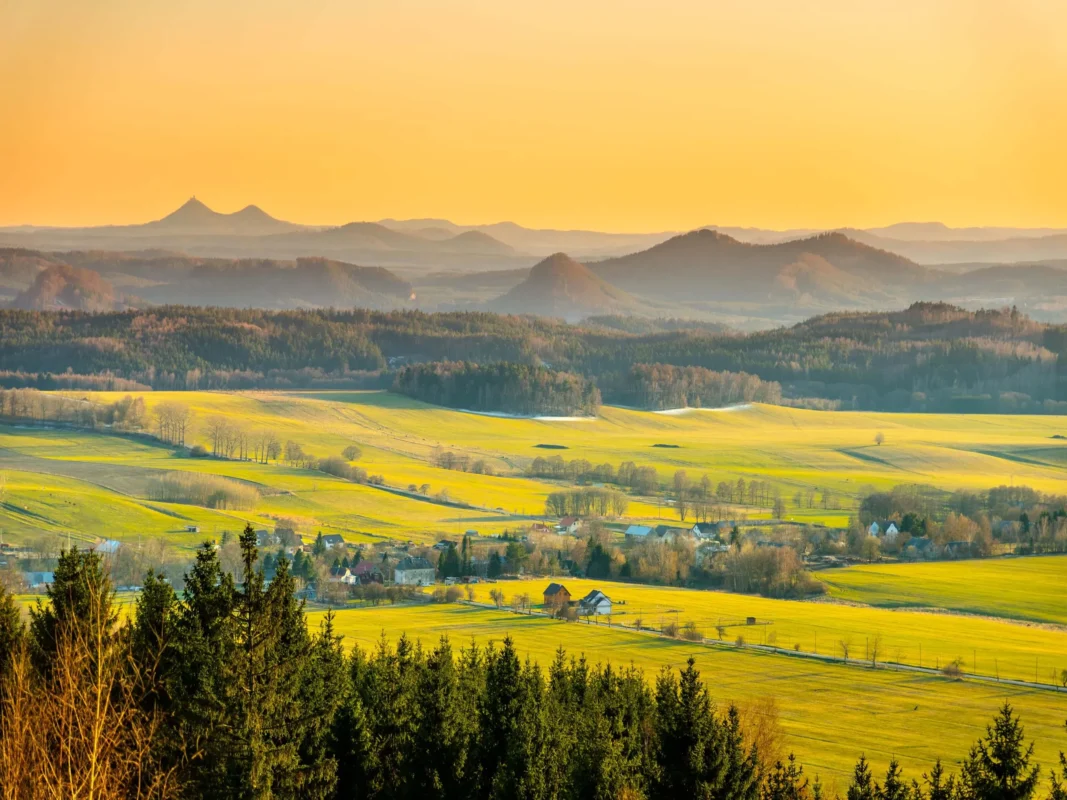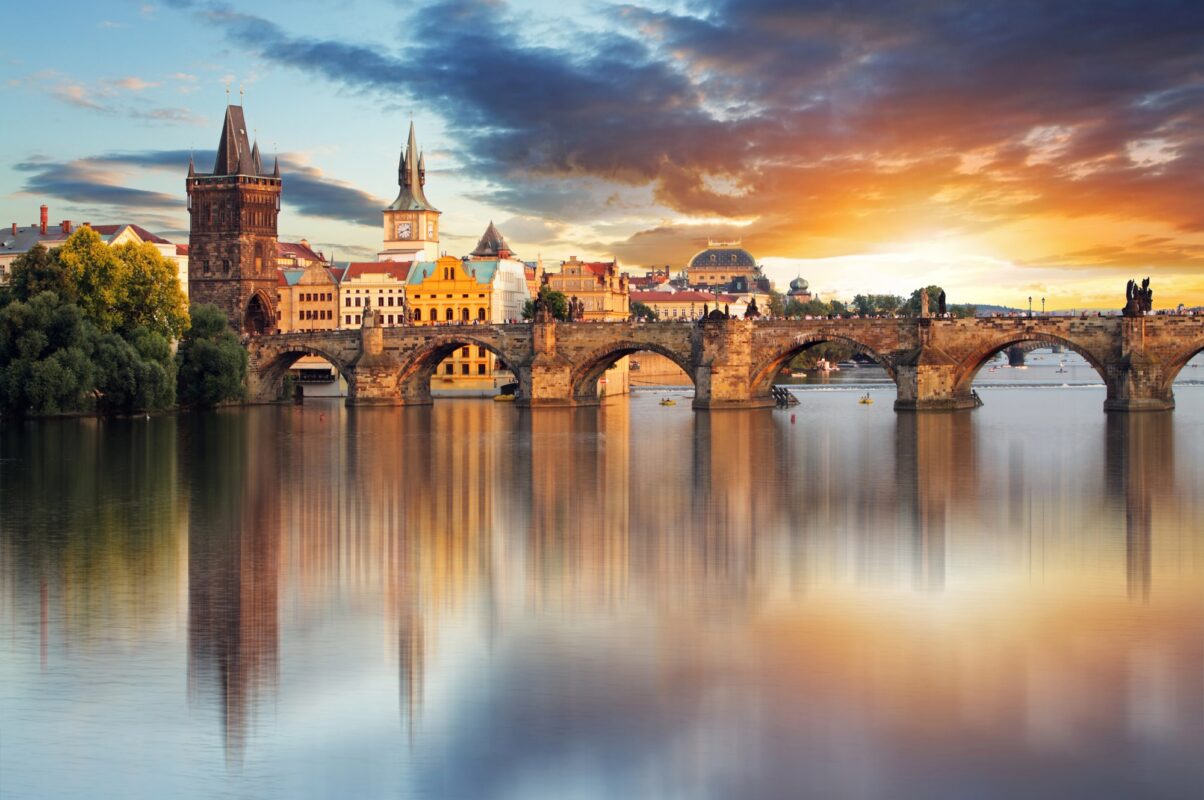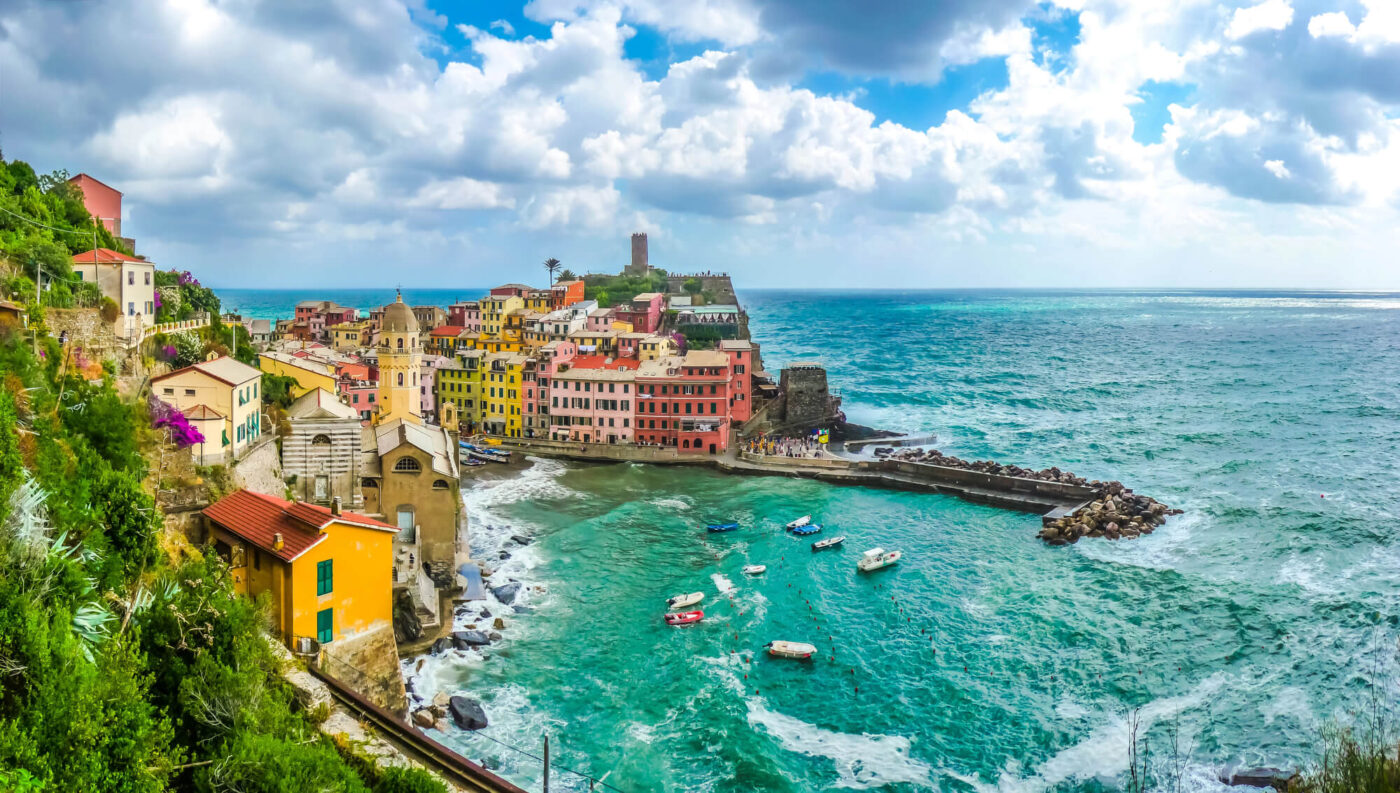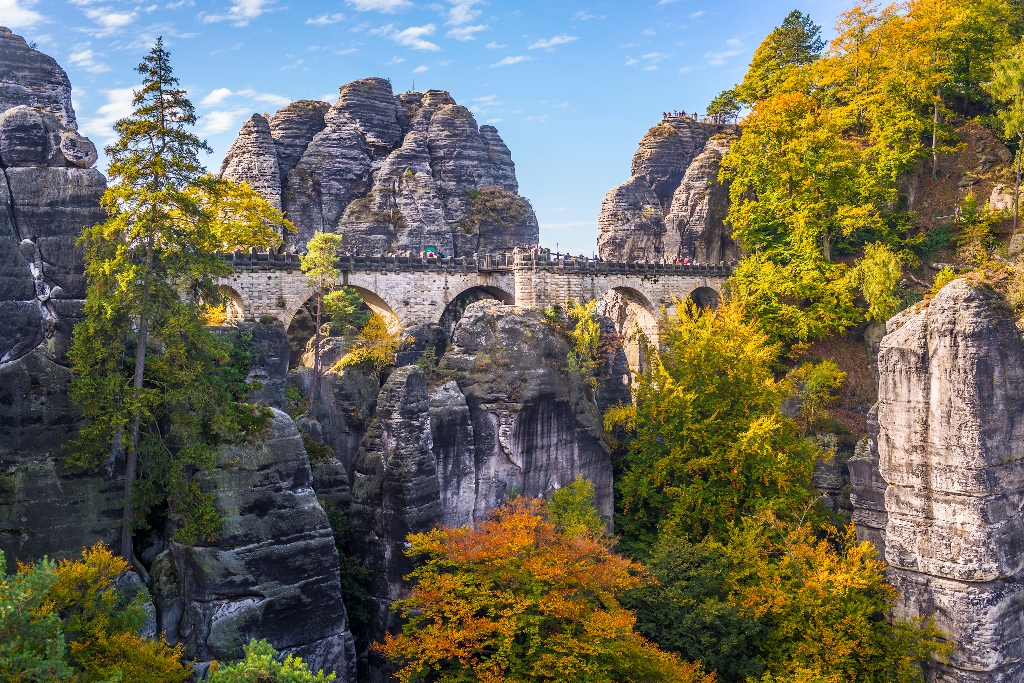I’ve recently spoken to many friends and family who have told me they want to move to Europe from the USA. While this can be an exciting and enticing dream, the first step is to consider whether you’re truly ready to leave behind America. Moving abroad isn’t just about picking a new place; it’s about making a major life shift, and that starts by understanding the implications for work, healthcare, family, and the sense of belonging. Indeed, moving to Europe as an American is not as easy as it may seem at first glance.
The U.S. is home, after all. It’s where friends, family, and a sense of shared culture exist. Beyond logistics like securing a visa or finding healthcare, there’s the emotional side to consider. You might miss more about the U.S. than you realize, from holiday traditions to little everyday experiences, like hearing the nostalgic sound of “A Charlie Brown Christmas” playing during the holiday season. While America may not have as many centuries-old buildings as Europe, it’s certainly not lacking in culture. In fact, Americans often don’t realize that many aspects of their lives that they take for granted are actually culture.
Consider, for example, a college homecoming football weekend. While you might not typically think of this as a cultural event, it’s got all the elements. There’s distinctive music, costumes, dance, culinary traditions, parades, and sporting events—all things you’d expect to find in a European traditional festival. Once in Europe, you may find that you miss American traditions and culture more than you expected.
And don’t forget that American nature can be stunningly beautiful and that there is more true wilderness remaining in America than in more crowded Europe. Camping in Europe often involves pitching a tent in an open field filled to the brim with other tents and RVs.
Many are currently considering moving to escape America’s political landscape, but remember that European countries come with their own complex politics. Political views that might disillusion you at home could be just as prevalent in your new home. And if you’re passionate about making a change, the best place to do so might still be the United States.
The Appeal of Life in Europe
With all that said, living in Europe does offer immense rewards, with benefits that go beyond postcards and travel blogs. As someone who has spent much of his adult life in Europe, I can assure you there are many good reasons to at least spend at least a few years living there. For one, it’s a cultural adventure that can broaden horizons every day. It’s easy to travel between different countries in a matter of hours, and even traveling within the same country exposes you to a variety of cultures.
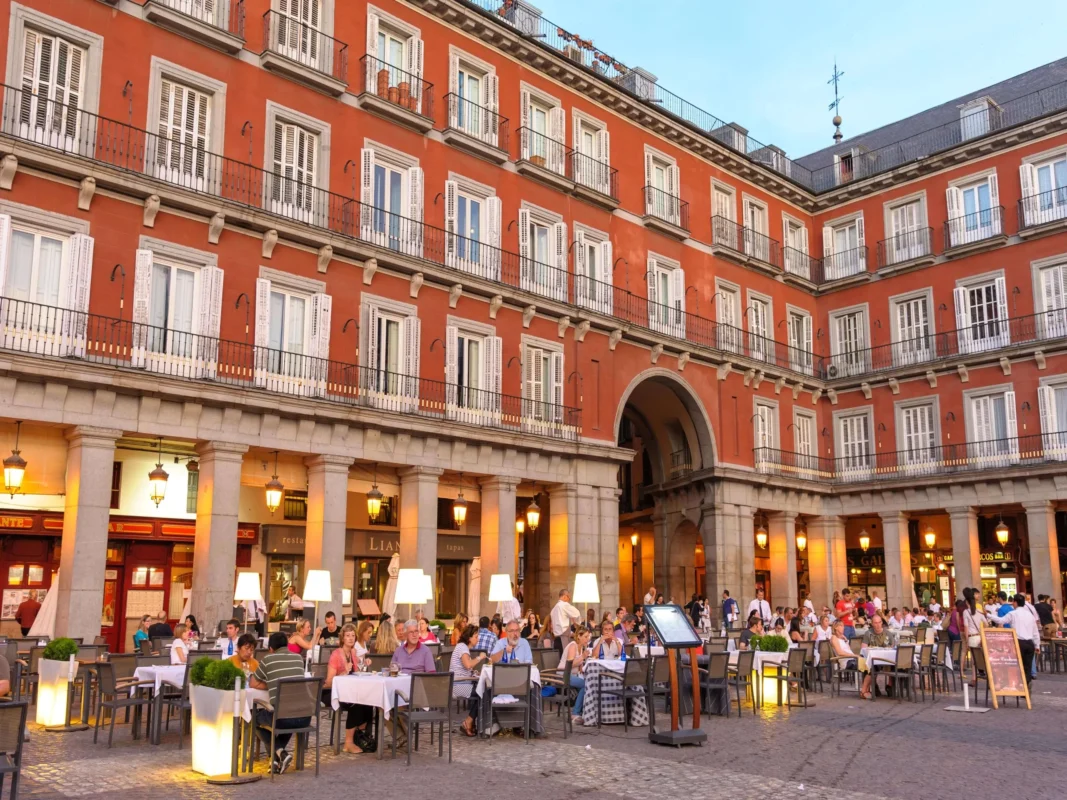
History and architecture aren’t just seen on vacation; they’re part of daily life, often in ways that encourage slower, more intentional living. There is also a great psychic benefit to living in a beautiful city or town. Dining al fresco in a historic town square isn’t just a weekend treat; it’s a way of life. Plus, with affordable healthcare, lower cost of living in many countries, and easy access to natural beauty and other countries, Europe can be a great option for those who feel like they’ve been priced out of the good life in America.
Exploring Europe with an Open Mind
If you’re still drawn to the idea of moving to Europe, the next step is not simply to choose the country that’s trending with expats—like Spain or Portugal—but to spend meaningful time researching and exploring. The tourist experience is often artificial; neighborhoods you visit as a tourist may not reflect everyday life, especially in places overrun by vacation rentals and Airbnb. A whirlwind trip might give you a flavor of a place, but it’s not enough to know if you can truly make it your home.
And this is where we can help. We specialize in trips that go beyond the tourist trail, offering authentic experiences in real neighborhoods that let you test out what life might actually feel like if you were to move there.
So, if you’re ready to dive deeper, here’s our list of European countries worth considering for your new home base, including tips for moving to Europe…
GERMANY
Legally Residing and Working in the Country
Germany has a reputation for being one of the more accessible European countries to move to if you’ve got a job or in-demand skills. Engineers, IT professionals, and healthcare workers are especially welcome, but there’s also an option for freelancers looking to work independently. Germany even has a freelancer visa that’s surprisingly flexible, particularly appealing for remote workers. If you stick around long enough, you can gain permanent residency—although you will need to demonstrate proficiency in German first and meet some other requirements as well.
Healthcare
Germany’s healthcare system is an interesting setup: everyone is covered, but care is administered through private insurers that are required to accept all residents. The result is very good medical care—Germany’s reputation for precision extends straight to their hospitals and clinics. Germany also tends to draw in skilled healthcare workers from neighboring countries. Private healthcare is another option, giving you a broad range of treatment options while still remaining affordable compared to what you’d pay in the U.S.
Getting Along in English
Most Germans speak English fairly well, particularly in urban areas and among younger generations. But Germany does expect you to make an effort with the language if you’re settling down. Fortunately, German isn’t a nightmare for English speakers to pick up, and you’ll find that Germans genuinely appreciate the effort, even if your German is on the “rudimentary” side at first.
Daily and Social Life
While Germany loves its rules, it’s also a place full of humor and romanticism—a fact that often surprises newcomers. Some of the rules may surprise you, such as the meticulous organization of recycling or the “off-limits” activities on Sundays such as shopping or mowing your lawn. Germans have a rich, sometimes reserved sense of humor. It’s true that they appreciate order (Ordnung), so things tend to run smoothly when everyone follows the guidelines.
The regions vary widely. Bavaria, for instance, is practically its own country, complete with lederhosen and beer festivals, while Berlin is fast-paced, a bit gritty, and avant-garde. You’ll also notice a difference between the former East and West Germany.
Germans tend to have a bit of a love-hate relationship with America. Many are deeply familiar with American culture, partly thanks to the long U.S. military presence post-WWII, and there’s plenty of curiosity and appreciation for Americans despite a general distaste for American politics.
If you want to leave America because of the deeply divided politics of the country, keep in mind that Germany is also in the midst of a rather traumatic political period itself, with the public torn over issues of immigration, security, and a sense of economic decline. While it may be easier to ignore as a foreigner, you’ll still be exposed to the discord at some level.
Weather and Natural Environment
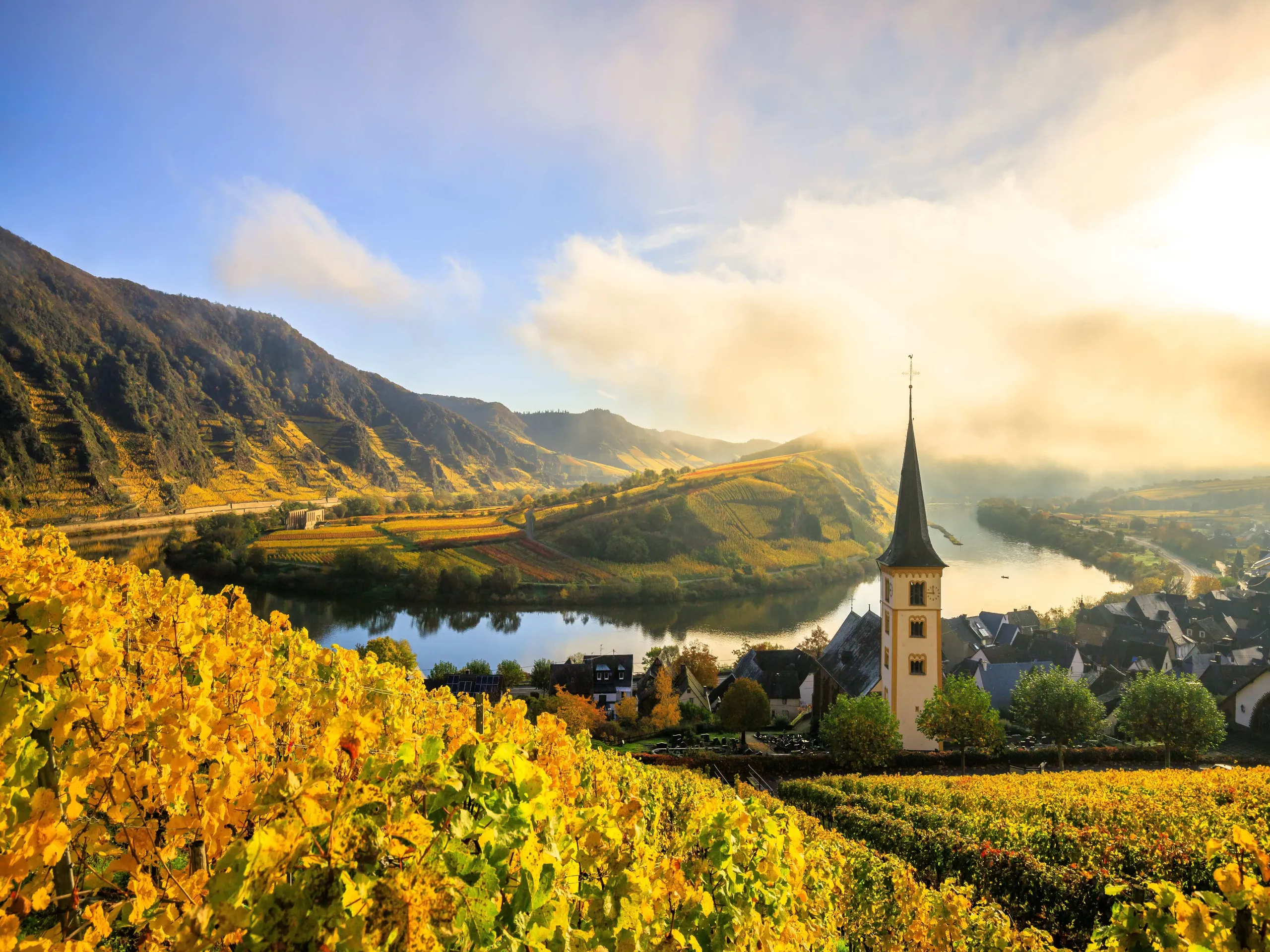
Germany’s landscapes are varied from the snowy Bavarian Alps in the south to the Baltic and North Sea coastlines in the north. Green forests, vineyards, farmlands, and picturesque valleys fill the countryside. For outdoor enthusiasts, Germany is fantastic, with hiking trails, bike paths, and skiing. The countryside is easy to access and full of charming, storybook towns nestled between the hills.
All four seasons are present here, although winters can be tough. It’s not because winters are particularly cold, but because the days are short and often gray, cloudy, and wet, especially further north where the days are shorter and the proximity to the sea results in more rain. Summers on the other hand, are typically ideal, with temperatures rarely reaching excessive heights but still being warm enough for swimming.
Built Environment and Transportation
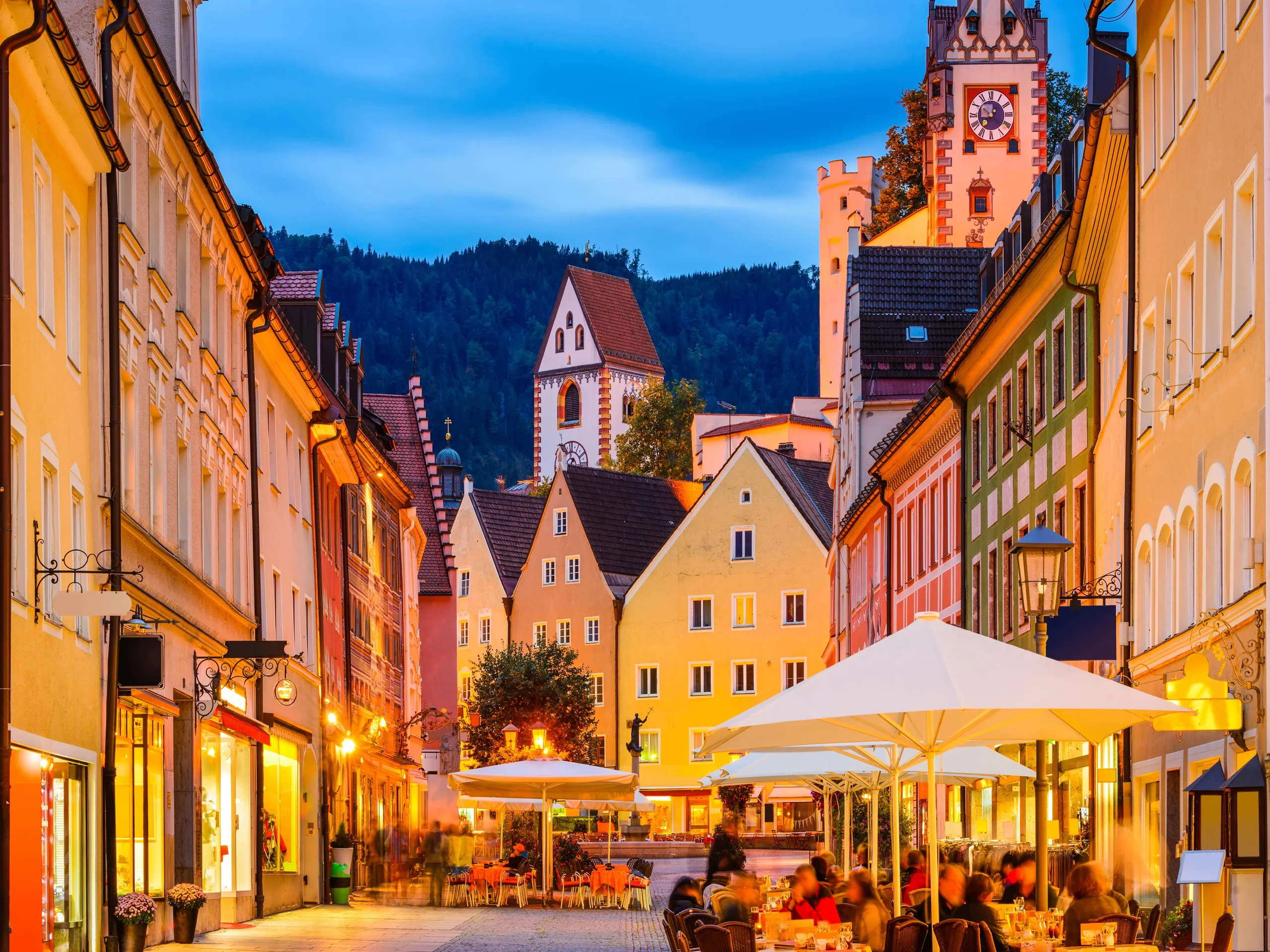
Germany is not dominated by a few large cities like many European countries, but it also has many medium and small cities that offer all the benefits of urban life without hassles. Some smaller cities, such as the college towns of Heidelberg or Würzburg, offer a near-perfect blend of charm and urban convenience. Much of Germany was bombed during WWII, and while some cities lost their historical atmosphere in reconstruction, most kept the original street layouts, preserving a distinctly old-world feel.
Most Germans rent rather than own their homes and apartments, and you will likely rent as well. If you live in a city, you are far more likely to live in an apartment than a home.
The German autobahn is rightly famous worldwide, with many no-speed-limit stretches. However, providing safe conditions for this speed requires frequent construction and road maintenance, so there’s a lot of traffic throughout the year. This means you’ll experience as many stop-and-go moments in epic traffic jams as you will open-road thrills.
If that doesn’t sound appealing, don’t worry, Germany’s rail network is top-notch, though recent years have seen a dip in its once flawless punctuality. Urban centers also have extensive public transport, and cities are also bicycle-friendly—Berlin, for instance, seems to give cyclists priority over both cars and pedestrians alike. Indeed, if you live in a city you may find you’re better off without a car.
Schooling and Family Life
Germany’s school system is traditional, but it’s known for a high standard of education. Public schools are robust, and German universities offer world-class education with very low tuition fees. Families in Germany are well-supported, with plenty of parks, family-friendly facilities, and generous parental leave policies. You’ll see kids out and about everywhere, and there’s a strong family-oriented culture in most communities.
Similar Countries
If you like Germany, you may also enjoy Austria, which shares cultural ties, language, and that same love for structure and efficiency. Switzerland is another option, though it comes with a higher cost of living and an even more precise “ordentlichkeit.”

Want to build your own trip to Germany instead?
Instantly create your own customized trip with our easy to use trip builder
CZECH REPUBLIC
Legally Residing and Working in the Country
If you’re planning to work remotely, the Czech Republic is a great choice. Americans can relatively easily obtain an entrepreneur’s license, which allows you to work as an independent contractor—ideal for digital nomads. If you’re set on teaching English, it’s too late for Prague, but you’ll find better luck outside the capital. With very low unemployment, jobs are generally available, and many positions only require English.
Healthcare
Healthcare in the Czech Republic is high-quality and impressively affordable. You’ll need a health insurance policy, but both public and private options are economical. While the healthcare system is generally very good, there is a shortage of dentists accepting public insurance, so you may end up paying out of pocket for dental care.
Getting Along in English
The Czech language is famously tough to learn, and even the most determined expats often find it impossible to master, especially since Czechs tend to switch to English the moment they hear a single mistake. Indeed, many Czechs consider speaking fluent English a mark of education and urbanity, making them all the more eager to speak English with you even if you’re trying to speak Czech to them. The silver lining to Czech’s difficulty is that if you actually manage to learn it, the astonished locals will look at you as if you’ve just cracked the secret to nuclear fusion.
In the countryside, English is rare, and a few Czech phrases will be handy for daily life, though younger generations increasingly speak English even in small towns.
In Prague, many expats can live in the city for decades without knowing more than a handful of Czech words, as the city has a large expat community and most international businesses conduct daily business in English.
However, one exception to this rule is the local bureaucracy, where Czech is the only accepted language. Either prepare for an unpleasant bureaucratic adventure or hire a translator.
Daily and Social Life
Prague has one of Europe’s most active expat communities, creating a sort of “parallel society” where English is often the social language—even among non-native English speakers. Czechs are famously reserved, but once you break through that initial reserve, they’re warm and loyal friends.
Social life often centers around the pub, where Czech beer (some of the best in the world) is a common denominator. But Czechs also love joining clubs for activities like rafting, cycling, and hiking, so sports and hobby groups are fantastic ways to meet people.
Life here is generally orderly and efficient, though the Czech bureaucracy has its own notorious quirks. Many people find Czech culture shares some of the efficiency and structure of Germany and Austria but are noticeably more relaxed—perhaps the inevitable outcome of the Czech sense of humor and a long, intertwined history with its neighbors.
Unlike many Western European countries, the Czech Republic has fewer immigrants from Africa and the Middle East. This means that if you’re darker-skinned, locals are more likely to assume you’re an American than they would in, say, Germany or France.
Weather and Natural Environment
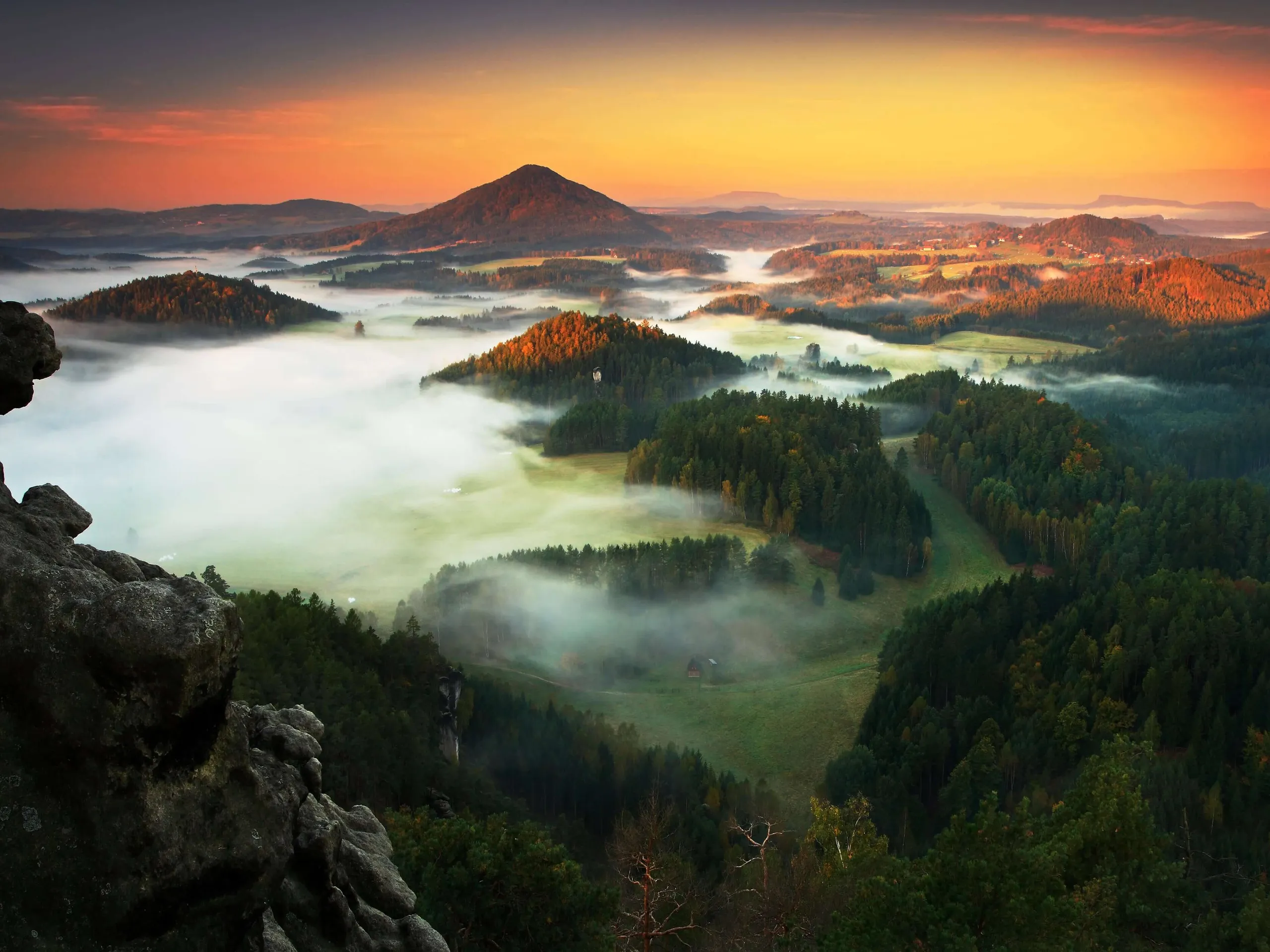
The Czech Republic experiences all four seasons, so expect everything from snow in the winter to heat waves in the summer. Be warned though, that winters are cold and often gray, and sometimes seem to drag on forever. The countryside is breathtakingly beautiful throughout the year and often feels like something out of Tolkien’s Shire, with gentle hills, lush forests, pastures, and cozy villages dotted with church steeples. While the mountains in the Czech Republic aren’t as tall or dramatic as the nearby Alps, they are quite beautiful, and the wooden architecture adds to the storybook feel.
Nature is incredibly accessible in the Czech Republic. The country has Europe’s best network of hiking trails, complete with a well-marked system of trail signs, so even newcomers can navigate easily. Czechs love heading out for a hike, especially since there’s typically a traditional pub along the way for a rewarding beer and hearty meal. The country also has fantastic cycling paths, and cross-country skiing is popular in winter.
One of the unique gems here is the abundance of castles. Every weekend you can hike to a new castle ruin, blending history and nature like nowhere else.
Built Environment and Transportation
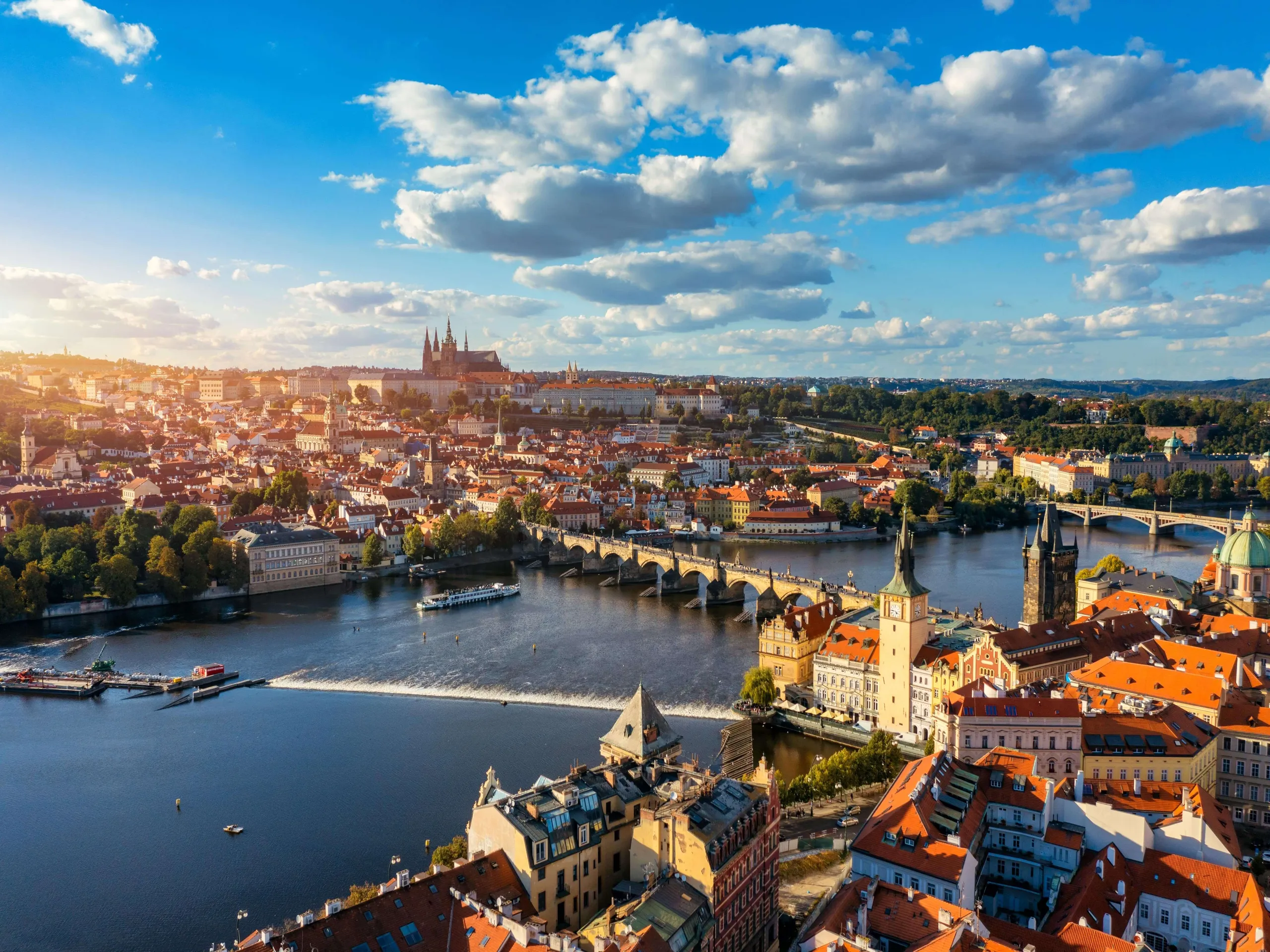
Prague itself is among Europe’s most beautiful cities, with historic architecture and a river-side setting that is truly enchanting. But it’s not just Prague—smaller cities like Brno, Olomouc, and Plzen are also charming and much less expensive. Prague is still relatively affordable compared to Western European capitals, though housing prices are quite high in comparison to salaries.
Czech cities are walkable and easy to navigate and have excellent and reliable public transport networks. Prague’s public transport is some of the best in Europe. There’s also an extensive rail and bus network connecting the cities. You can get around quite well without a car, but if you want to really dive into the countryside, having a car will make it easier to explore.
Schooling and Family Life
The Czech Republic is quite family-friendly, with plenty of playgrounds, parks, and children’s areas in restaurants. This has helped result in a birth rate that is high by European standards. Schools are generally good, though some have a bit of an old-fashioned approach. For non-Czech speakers, the language barrier in schools can be a challenge, especially outside of Prague.
Prague has a number of excellent international schools, though they’re on the pricey side. Czech universities are free if you study in Czech, with modest fees for English-language programs. A major family perk is the country’s generous maternity leave policy, which covers up to three years per child.
Similar Countries
Austria shares deep cultural and historical ties with the Czech Republic, shaped by nearly four centuries when they were both ruled by the Austrian emperor. For a similar Central European feel (as well as notoriously difficult languages), Hungary, Slovakia, and Poland are also good options.
ITALY
Legally Residing and Working in the Country
Before moving to Italy, you’ll need to secure a visa, with options for studying, working, or investing. After five years of residency, most people can apply for permanent residency, making “la dolce vita” a long-term option.
If you have Italian roots, Italy offers the “Jure Sanguinis” pathway, which allows you to claim citizenship just by proving direct ancestry. For retirees, an elective residency visa is available, allowing you to live (but not work) in Italy if you can demonstrate sufficient passive income.
To work in Italy you will either have to get a job offer in advance from an Italian employer or get a self-employed visa. Luckily the self-employed visa is not particularly difficult to obtain, so most remote workers will find this the more viable path towards residency.
Healthcare
Italy’s healthcare system is universal and much more affordable than in the U.S. If you’re employed, contributions are taken from your payroll taxes; if not, you’ll need to pay an annual fee. While public healthcare is widely accessible, private insurance offers quicker access to care and more treatment options and is still economical compared to a similar level of coverage in the U.S.
Getting Along in English
In major cities, you can generally get by with English for everyday tasks. However, in smaller towns and rural areas, fewer Italians speak English, so learning some Italian will be essential. Most workplaces function in Italian, and navigating Italian bureaucracy requires that you either know the language or hire an interpreter. Italian isn’t particularly hard to pick up, and Italians appreciate the effort.
Daily and Social Life
Work is important but doesn’t dominate life here. In August, it often seems like the whole country takes the month off! Expect leisurely lunches and late dinners, usually around 9 PM. Summer nights spent dining al fresco amid historic piazzas are genuinely enchanting.
Italy is largely safe, though petty crime, like pickpocketing, is common in certain areas, especially Naples and some parts of Sicily. Although the mafia still exists, it’s usually invisible to daily life for most people. Italians are welcoming, especially if you show interest in the local culture. Small towns may expect more deference to traditions.
If you are darker-skinned, you will still generally find Italians to be welcoming people, although exceptions do of course exist. Italy does have a large immigrant population from Africa and the Middle East, meaning that you may encounter some stereotypes from those who assume you also come from these regions.
The cost of living varies widely—northern cities like Milan and Rome are very pricey, while Sicily, southern and eastern regions, such as Marche are more affordable. Apulia, despite being in the south, is pricier, as it’s popular for summer homes.
Weather and Natural Environment
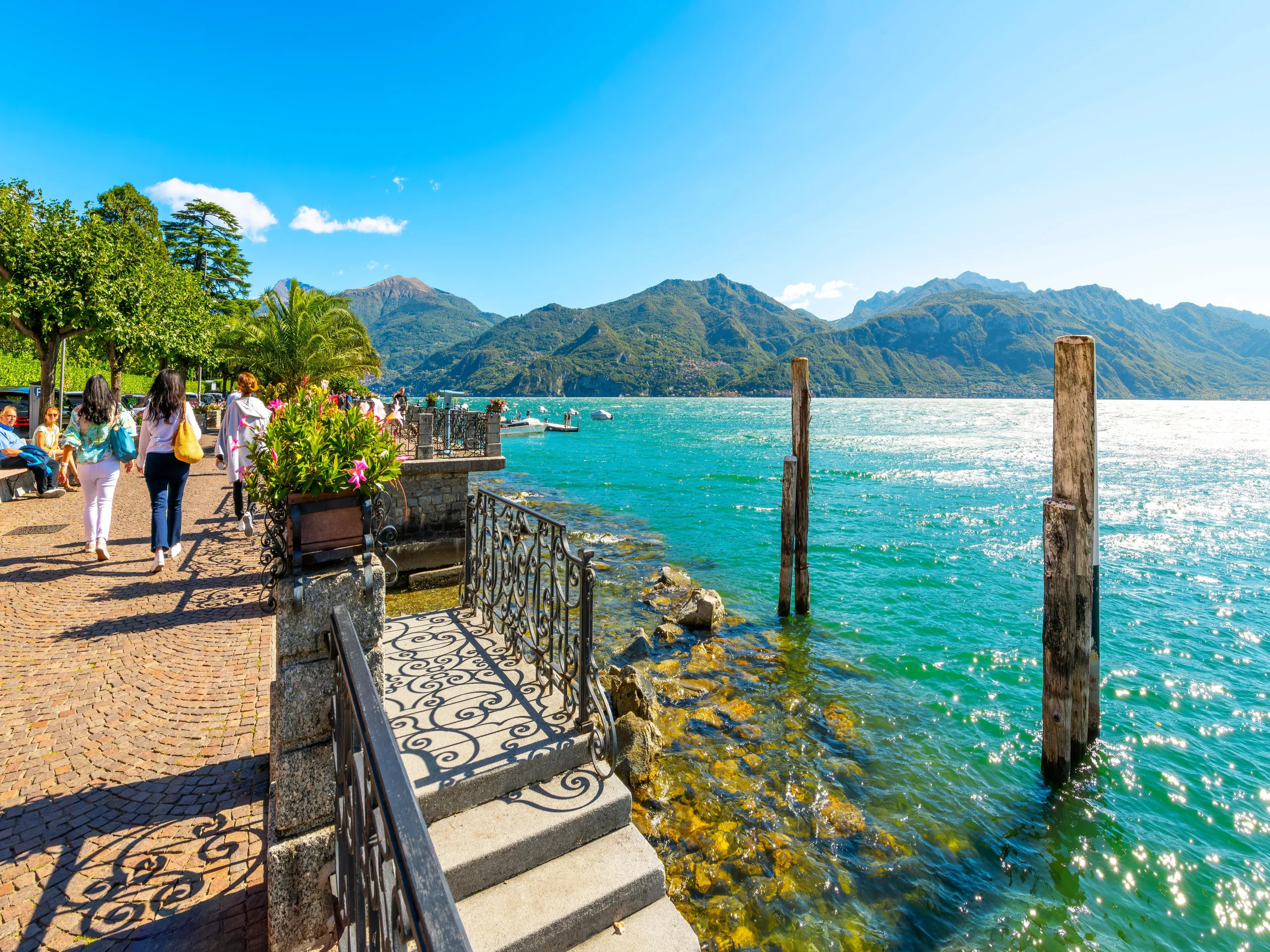
Italy’s weather is as varied as its landscapes. From the snowy Alps in the north to the sun-drenched Mediterranean climate in the south, Italy offers an impressive range of climates. Summers can get hot, especially in the south, so those who prefer mild weather may want to stick to northern or coastal regions. But keep in mind that being trapped in the city during the summer can be tough even in northern Italian cities.
No matter where you are, you’re never too far from either the sea or mountains, making Italy a haven for nature lovers. The country’s diverse terrain includes alpine valleys, dramatic coastlines, and sandy beaches, as well as stunning lakes, countryside, and rolling hills. Hiking is popular in the Alps, Apennines, and regional parks, while winding countryside roads provide beautiful cycling routes. Whether you crave a craggy mountain peak, a rocky coastline, or a tranquil lake, Italy’s landscapes cater to every outdoor enthusiast.
Built Environment and Transportation
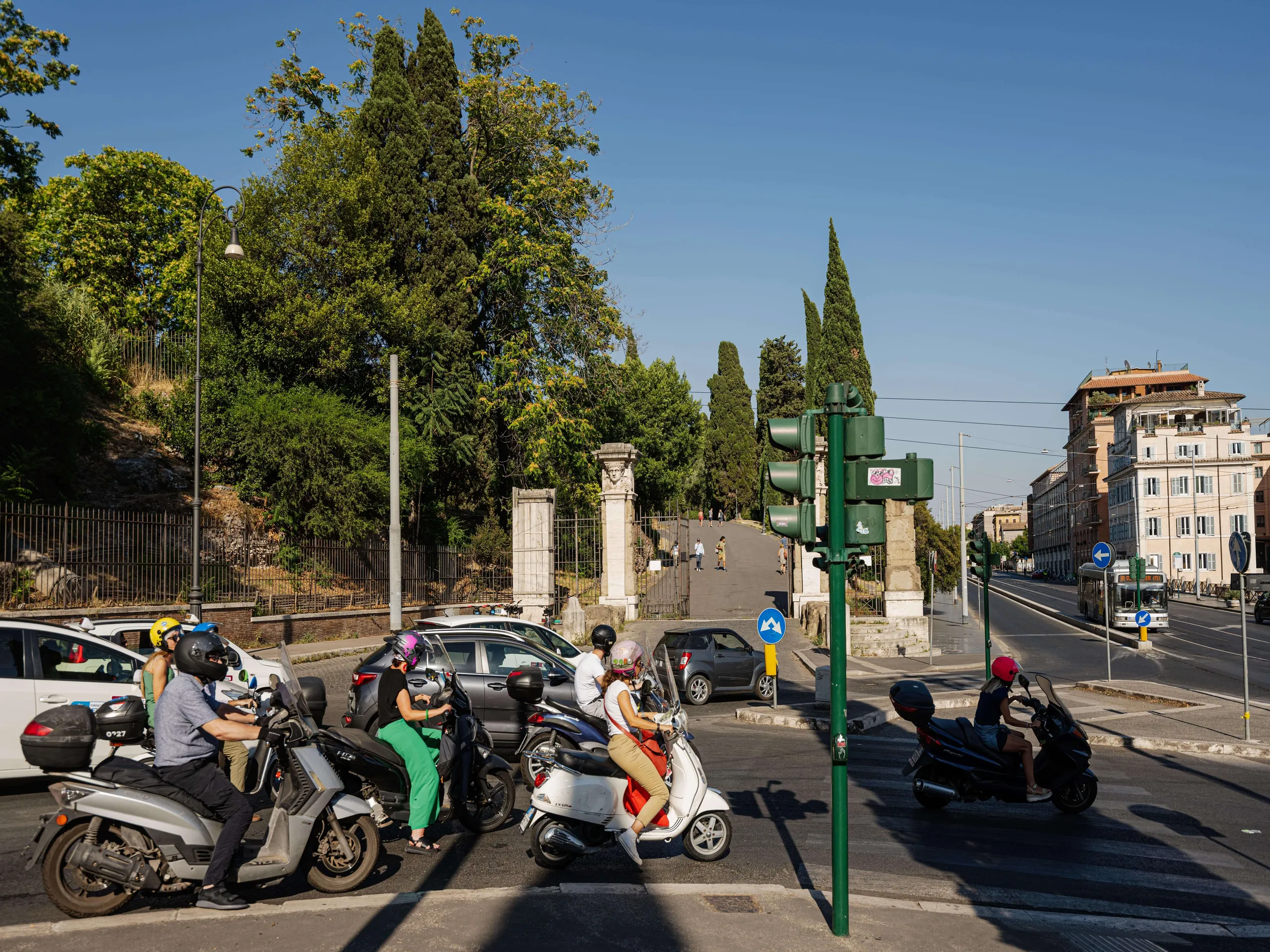
Italy’s cities are renowned for their historic charm, with medieval, Renaissance, and baroque influences everywhere. While much of the 20th-century development can feel a bit concrete-heavy, you’re never far from a charming historic center. Italian life revolves around the piazza, where you can enjoy a morning cappuccino or an evening glass of wine while the world goes by.
Most people live in apartments, and a well-maintained historic one comes at a premium—unless you’re open to smaller towns, many of which are actively looking for new residents and may even offer incentives to move in.
If you dream of restoring an old farmhouse or villa, you’ll find no more idyllic place for it than Italy’s countryside. Just be prepared for local bureaucracy and construction surprises, which can demand plenty of money, patience, and Italian language skills. Without the latter two requirements, expect to spend a whole lot more money.
Most Italian city centers are easy to navigate on foot, with layouts designed before cars were common. Public transport is generally good but can be crowded and, in some cities, a bit unreliable. Driving can be chaotic, with traffic jams and high parking costs. A Vespa is a great way to bypass traffic if you’re brave enough, but be sure you’ve got your health insurance figured out first.
Italy’s train network is extensive, affordable, and comfortable, making it a good choice for intercity travel. Exploring rural areas by train or bus is possible, though car rentals are often a good option for more remote areas. If you live in a small town, having a car will be quite useful. Italy’s road network is also excellent, although driving on the autostrade (highways) sometimes requires nerves of steel.
Schooling and Family Life
Italy’s education system is solid, with good public schools and affordable, publicly funded universities. The low birth rate means children are often doted upon by multiple grandparents.
Similar Countries
If you’re drawn to Italy’s Mediterranean vibe but need a lower price point, consider the Croatian coast, where Venetian influence is evident in most historic cities. Malta is also a great option, as English is an official language and Mediterranean charm abounds.
DENMARK
Legally Residing and Working in the Country
Denmark has strict immigration laws, so moving here can be challenging unless you have strong qualifications. In-demand skills, particularly in fields like engineering or IT, may get you a worker’s visa, but otherwise, it’s a tough nut to crack. If you have the funds, a bit of a “backdoor” option is a student visa. Regardless of age, you can enroll at a Danish university (with tuition significantly lower than the U.S.), and part-time work is permitted as a student. While studying, you’ll also be able to network, potentially leading to a job and a worker visa. Or maybe even to the third visa option – a Danish spouse.
Healthcare
Denmark’s healthcare system is universal and tax-funded, meaning you’ll have access to services, but don’t forget that you will pay high payroll taxes to fund your healthcare. That said, Danish healthcare is world-class.
Getting Along in English
Danes are famously fluent in English, so much so that you can easily get along there without speaking Danish. But if you plan to stay, making an effort to learn Danish is highly recommended, as it helps with social integration. In fact, there’s a language test required for even those obtaining a spousal visa, as Danes expect some effort toward linguistic and cultural assimilation.
Nonetheless, don’t worry about handling daily needs or making friends while only speaking English. Indeed, don’t be surprised if a whole group of Danes will effortlessly switch over to English just to allow you to join a conversation.
Daily and Social Life
Denmark has strong social expectations around integration, and there’s a cultural pushback against immigration—this sentiment spans the political spectrum, not just the right wing. As a result, immigrants from any background, even (or perhaps especially) Americans, are expected to adapt to Danish norms. You may also find that while Danes are famously polite, there’s a touch of condescension toward American culture, partly due to the Danes’ deep familiarity with American media and politics (they don’t even need subtitles for English-language shows).
The cost of living is extremely high, and your dollar-based savings won’t stretch far without substantial funds. While tax-financed government services like healthcare and education are available, these come with high tax rates, taking more than half of your income when factoring in Denmark’s high VAT (sales tax) on purchases.
Socially, Danes are more reserved than Americans, so forming close friendships takes time. However, work or academic environments are good places to start building connections. Danish social circles may be smaller and more stable, but once you’re in, you’re typically in for the long haul.
Weather and Natural Environment
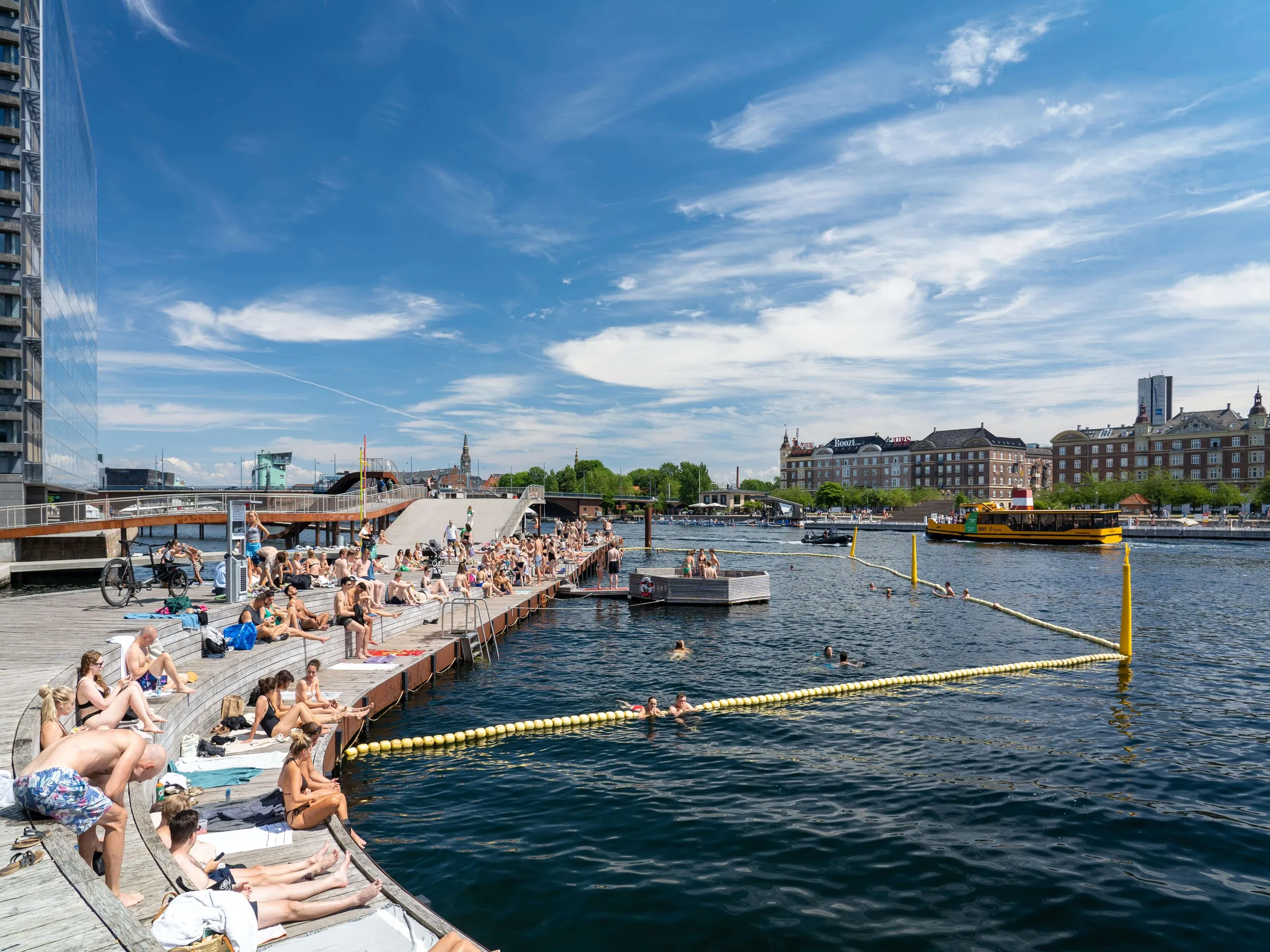
If you’re thinking of moving to Denmark, brace yourself for the winters. Summers are lovely, with long days and pleasant temperatures, but winters are tough. With the sun setting before 4 PM in December, days are short, and snowfall is rare. Instead, expect long stretches of gray skies and rain.
Denmark’s natural scenery is charming, with quaint countryside and picturesque seaside villages complete with thatched roofs. Its location on a peninsula and many islands means you’re never far from the water, with plenty of beautiful (albeit cold) beaches. They also care greatly about their environment, and it shows. You can even go swimming in the heart of Copenhagen’s harbor. Danes are outdoorsy, making the most of good weather with biking, boating, and other outdoor activities.
Built Environment and Transportation
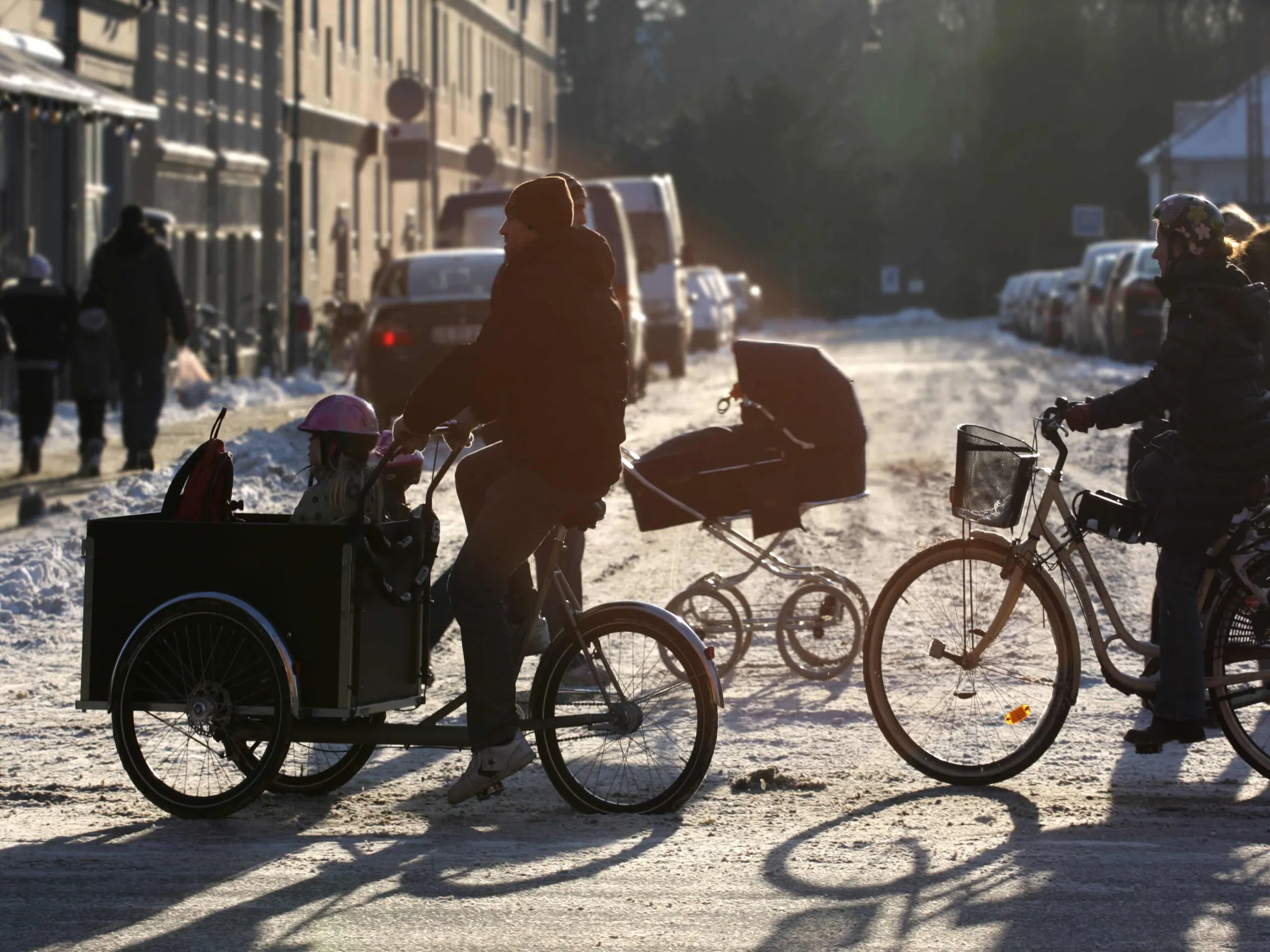
Denmark’s cities have historic, tidy, and beautifully planned urban centers. Although modern architecture is dominant in newer developments, the Danes have a knack for making it look fresh and aesthetically pleasing—even the bus stops are often well-designed.
With the high cost of living, space can be limited, and many people live in apartments rather than houses. Denmark’s excellent public transport network and extensive cycling infrastructure make it easy to get around without a car, especially in Copenhagen. Danes rely heavily on bicycles, and you’ll often see families with small children navigating daily life on two wheels instead of four.
Schooling and Family Life
Denmark is extremely family-friendly, with kids welcome in various settings where they might not be in the U.S. Parks are everywhere, and public spaces are typically kid-friendly. The Danish school system emphasizes integration, so expect a lot of focus on the Danish language and culture. For international schooling, private options exist but aren’t cheap.
Similar Countries
Other Scandinavian countries—Sweden, Norway, and Finland—have similar vibes, as does the Netherlands, which shares Denmark’s love for cycling and English fluency.
FRANCE
Legally Residing and Working in the Country
France offers various options for residency, especially for highly skilled workers, students, and investors. If you’re married to a French citizen, the process is simpler, and you can apply for permanent residency after five years. Long-stay visas are also available for studying or establishing a business, and if you have a specific skill set, France’s talent visa programs can open doors.
Healthcare
France’s healthcare system is world-renowned and publicly funded, making it accessible and affordable for residents. You may want to take out private insurance to cover any gaps in the public system, though even that’s a fraction of what it would cost in the U.S. Expect excellent care across the board, from general practitioners to specialized treatments.
Getting Along in English
While English is spoken by many French people, particularly younger generations and in major cities, France has a deep pride in its language. Outside of cities like Paris, Lyon, and Marseille, learning French is more or less essential. If you’re planning to stay long-term, locals will expect you to make a genuine effort with the language. French society holds high standards for linguistic integration, especially since many immigrants have successfully learned French—it’s fair to say that they’ll expect the same from you.
Daily and Social Life
France prizes a high quality of life and is known for its love of leisure, food, and the arts. The French relationship with work is famously balanced, and while they work hard, they value personal time, especially when it comes to enjoying long, social meals. Sundays are still considered a day of rest, so expect many businesses to be closed. Social gatherings often center around food and drink, with long, lingering dinners that emphasize France’s slower, savor-the-moment pace.
Cost of Living
Living costs vary widely in France. Paris, Nice, and other popular cities can be pricey, but many other regions offer more affordable living, particularly in the countryside or smaller towns. Food and wine are often affordable, even for high-quality options, and healthcare and education are also budget-friendly compared to U.S. standards.
Weather and Natural Environment
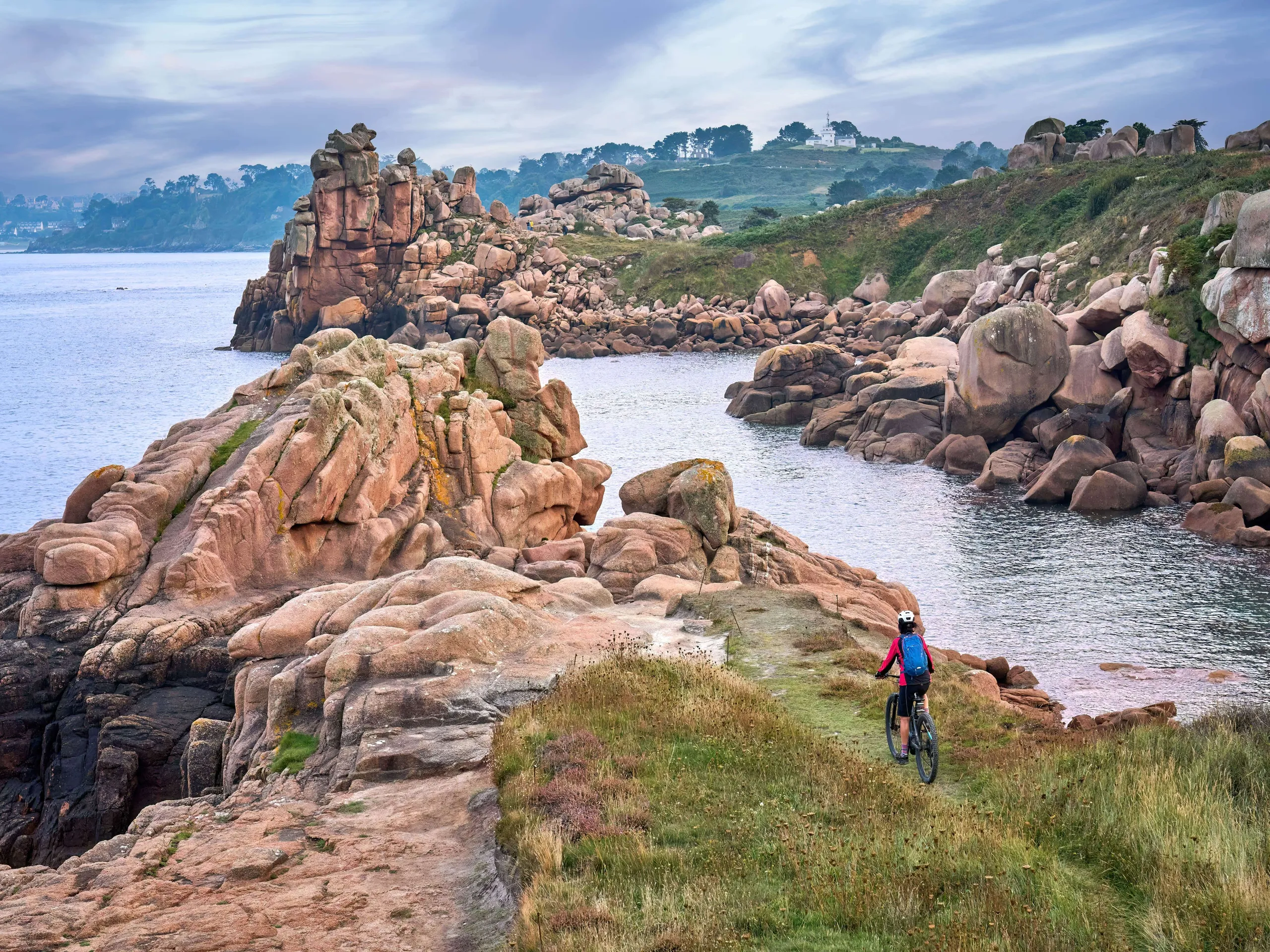
France’s geography offers something for everyone. The Alps and Pyrenees bring snowy peaks, the Mediterranean has warm, sunny beaches, and there are vast countryside regions with vineyards and charming villages. Summers are generally pleasant throughout the country, with hot temperatures in the south. Winters can be mild except in mountainous areas, and the changing seasons bring a diversity to the landscape that makes it easy to explore year-round.
Whether you enjoy cycling, skiing, hiking, or sunbathing, France’s natural beauty is extensive. From the Loire Valley’s lush vineyards to Brittany’s dramatic coastlines, the country is set up to suit a wide variety of outdoor lifestyles.
Built Environment and Transportation
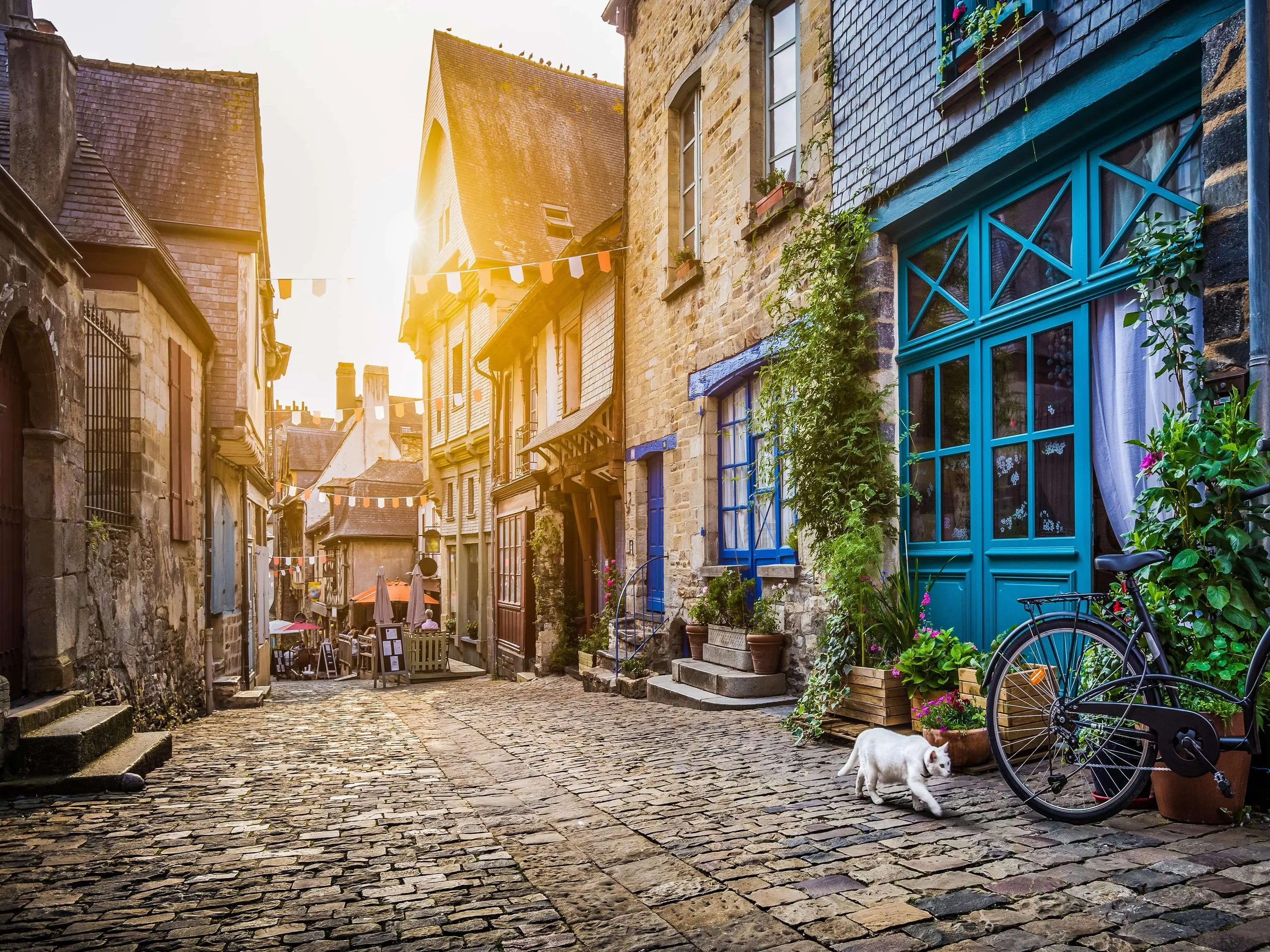
French cities and towns are a blend of medieval, Renaissance, and modern architectural styles. Much of France’s most impressive and beautiful urban architecture, particularly in Paris, was actually built in the late 1800’ss, meaning that there are a lot of apartment buildings with plenty of historic charm but without some of the inconveniences of much older buildings. Historic streets, cozy cafes, and grand boulevards are hallmarks of France’s urban environment. While Paris captures much of the fame, it is only one of many beautiful cities in France.
The public transportation network is one of Europe’s best, with high-speed trains (TGV) connecting major cities efficiently. Smaller towns are well-connected by regional trains and buses, so you can live quite comfortably without a car, though rural areas may require one. One somewhat annoying characteristic of trains in France, is the fact that railway lines typically lead to Paris, meaning you often have to travel to Paris and switch trains, even if your destination is much closer to your origin than Paris is!
Public transport within cities is also quite extensive, especially in Paris, although you will find that some public transport is overcrowded and feels rather dirty and shabby in comparison to other European cities.
Driving is manageable, but France’s extensive rail system generally makes it unnecessary in cities. French roads are well-maintained, and the autoroutes make road trips across the country easy.
Schooling and Family Life
The French education system is high-quality and somewhat traditional, with an emphasis on discipline and academic performance. Public schooling is free and covers all levels, including affordable university options. If you’re looking for international schooling, there are private schools available in major cities, though they can be costly.
France is family-friendly, with strong community support for parents and children. Public parks, playgrounds, and cultural sites are abundant, making it easy to enjoy family outings, and family policies include generous parental leave.
Similar Countries
For a similar cultural feel with more multilingual accessibility, Belgium offers a mix of French and Dutch-speaking communities. If you’re not sure you’re ready to leave North America, Quebec in Canada also shares cultural ties with France and has a strong French-speaking population.

Want to build your own trip to France instead?
Instantly create your own customized trip with our easy to use trip builder
SPAIN
Legally Residing and Working in the Country
Spain offers several visa options, including student, work, and non-lucrative visas for those who don’t plan on working in the country but can prove sufficient income. There’s also a “Golden Visa” available for significant investors, typically those purchasing property worth over €500,000. For long-term residents, permanent residency can be obtained after five years, and citizenship is possible after a decade.
Healthcare
Spain’s healthcare system is excellent and provides universal coverage, offering medical services at a fraction of the cost found in the U.S. While public healthcare is accessible to long-term residents, many people opt for private insurance, which is affordable and offers quicker access to specialists.
Getting Along in English
English is often understood in major cities like Madrid and Barcelona, especially among younger people and in tourist areas. However, outside these hubs, English fluency drops significantly. In smaller towns and rural areas, speaking Spanish becomes essential. Spain, like France, places a high value on linguistic integration, and locals will appreciate any effort to speak Spanish. Picking up some Spanish will go a long way in helping you integrate socially and navigate daily life.
Daily and Social Life

Spanish life revolves around socializing, with family, friends, and food at the center. Spaniards value leisure and take pride in their relaxed, balanced lifestyle. Long lunches, late dinners, and a love of gatherings over tapas and drinks are the norm. Spain’s famous siesta is more of a regional habit nowadays, but you’ll find that many shops and restaurants still close in the afternoon, especially outside of major cities.
Spain is known for its festivals and celebrations, including local fiestas, Semana Santa, and La Tomatina, which can add a lively (and sometimes wild) touch to daily life. Spaniards are warm, welcoming, and generally very inclusive of newcomers, especially those who show an interest in Spanish culture and traditions.
Spain also attracts a lot of Britons, especially in Andalucia, meaning that in many areas you won’t have too much trouble tapping into an English-speaking social crowd.
Cost of Living
Spain is generally affordable compared to other Western European countries, with living costs that vary by region. Big cities like Madrid and Barcelona are more expensive, while regions such as Andalusia, Galicia, and Valencia offer lower-cost alternatives. Eating out and enjoying Spain’s culinary scene is often affordable, and public services like healthcare and education provide good value.
Weather and Natural Environment
Spain’s climate varies by region, with the hot, dry summers and mild winters of the Mediterranean in the south, the wet and cooler climate of the north, and the dry plateau in the center of the country. The Mediterranean coast and islands like Ibiza, Mallorca, and the Canary Islands enjoy warm weather year-round, making them ideal for beach lovers.
Spain is blessed with diverse natural beauty. From the beaches of the Costa Brava and Costa del Sol to the rugged Pyrenees and Sierra Nevada mountains, you’re never far from the sea or mountains. Outdoor activities such as hiking, skiing, and surfing are popular, and Spain’s protected nature reserves, coastal landscapes, and historic rural villages offer countless options for adventure.
Built Environment and Transportation
Spanish cities are known for their vibrant plazas, historic architecture, and mix of traditional and modern buildings. Urban life is centered around plazas where locals gather, surrounded by lively cafes and tapas bars. Apartments are more common than standalone houses, especially in larger cities, but Spain also has many charming small towns and villages for those looking for a quieter lifestyle.
Spain’s public transportation network is well-developed, with reliable trains, buses, and a high-speed rail system (AVE) connecting major cities like Madrid, Barcelona, and Seville. Public transport is affordable, and for getting around in cities, metros, buses, and even bicycles are popular options. Owning a car is generally only necessary for those living in rural areas.
Schooling and Family Life
Spain is family-oriented, and children are welcomed in almost all social settings. Public schools are generally of good quality, and Spain also offers several affordable private and international schools. University tuition is low-cost compared to U.S. standards, and the country has a good selection of public universities.
Spanish family life is vibrant, with many public spaces designed to be child-friendly. Parental leave policies are generous, and the culture strongly emphasizes family gatherings, meals, and spending time together.
Similar Countries
For a similar Mediterranean vibe with a focus on social life and family, consider Portugal or southern Italy. Both offer warm climates, lower living costs, and a similar relaxed lifestyle.
PORTUGAL
Legally Residing and Working in the Country
Moving to Portugal is one of the easier ways to settle in Europe, as it offers several visa options for American expats. The D7 visa is popular for retirees and remote workers who can demonstrate sufficient passive income. There’s also a “Golden Visa” for those investing €500,000 or more in real estate. Permanent residency is available after five years, and citizenship can be applied for after six, making Portugal a great choice for long-term living.
Healthcare
Portugal’s healthcare system is both high-quality and affordable. Public healthcare is available to all residents, but many expats opt for private insurance, which offers quicker access to specialists and remains relatively inexpensive.
Getting Along in English
English is widely spoken in major cities and popular tourist regions like Lisbon, Porto, and the Algarve, where expats and tourists make up a large part of the population. However, in rural areas, English is less common, so learning some Portuguese can be valuable. While the Portuguese appreciate any effort to speak their language, they’re known for being patient and accommodating toward English speakers.
Daily and Social Life
Portuguese life is rooted in a relaxed, family-centered culture where food, friends, and community come first. Long meals, late dinners, and time spent at cafes are key aspects of daily life, and dining out is affordable. Portugal is famous for its warmth and hospitality, welcoming newcomers who show an interest in local traditions. Traditional festas and annual celebrations like Carnaval add color and festivity to the year, giving newcomers plenty of chances to join in and experience Portuguese culture.
In recent years, large numbers of Americans have moved to Lisbon and Porto, creating active expat communities. It’s easy to meet other Americans in these cities, making it a welcoming place to socialize and connect with fellow expats while also integrating into local life. Shops and businesses, especially outside major cities, often close for a few hours in the afternoon—a nod to the country’s laid-back approach to daily life. In Portugal, work-life balance is taken seriously, and there’s an emphasis on enjoying life at a slower, more intentional pace.
Cost of Living
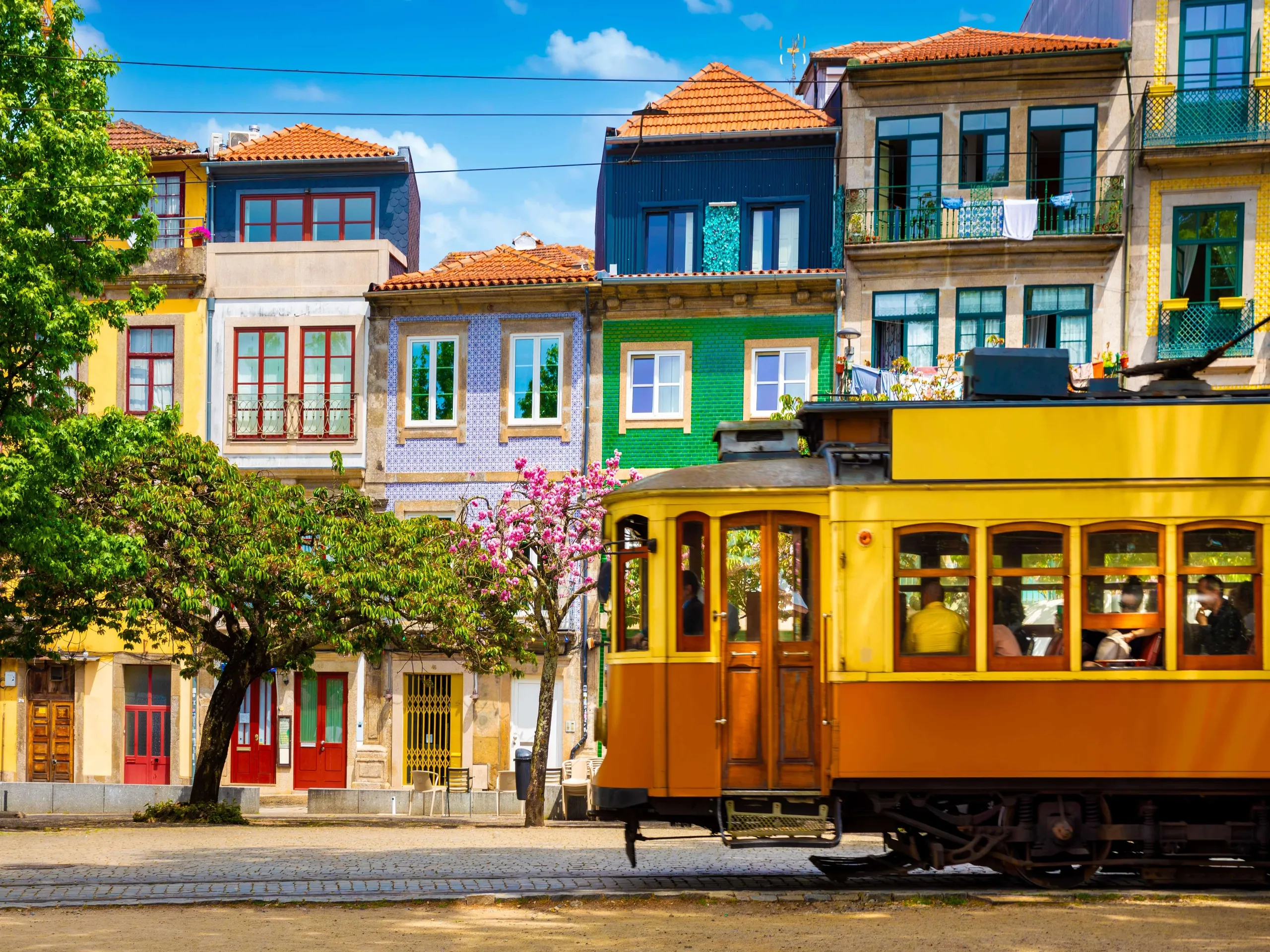
Portugal offers one of the most affordable costs of living in Western Europe, particularly outside Lisbon and Porto. The Algarve, Alentejo, and other regions offer lower housing and living costs, and dining out is also budget-friendly, making it easy to enjoy Portugal’s culinary scene without straining your wallet.
Weather and Natural Environment
Portugal’s mild, sunny climate is one of its biggest draws, with more than 300 days of sunshine per year. With warm, dry summers and mild, rainy winters, especially along the coast, its climate is often compared to California’s. Indeed, that’s one of the reasons so many Californians have moved here in recent years. Coastal areas, particularly the Algarve, enjoy mild temperatures year-round, ideal for beachgoers, while the north is cooler and greener.
Whether you’re drawn to the sandy beaches of the Atlantic coast, the rolling vineyards of the Douro Valley, or the rugged mountains in the interior, Portugal’s landscapes are stunningly diverse. Outdoor activities like surfing, hiking, and exploring nature reserves are popular, and Portugal’s proximity to both sea and mountains means breathtaking scenery is always within reach.
Built Environment and Transportation
Portuguese cities blend historic charm with modern comforts. Lisbon’s colorful tiles, Porto’s riverside architecture, and the cobbled streets of smaller towns create a lively yet cozy urban environment. Apartments are common in larger cities, while rural areas have quaint, affordable cottages and farmhouses.
Public transportation is efficient and affordable, with Lisbon and Porto offering metros, buses, and trams. Portugal’s rail network connects most cities and regions, making it easy to travel without a car. Although city dwellers typically don’t need a vehicle, having a car is beneficial for those living in rural areas or those who enjoy exploring the countryside on their own schedule.
Schooling and Family Life
Portugal is a family-friendly country, with good public schools and several international schools in larger cities. Universities are affordable, attracting students from all over, and parental leave policies are generous. Family gatherings are a central part of life, with meals and celebrations often including multiple generations.
Similar Countries
For a comparable warm climate, affordable living, and relaxed Mediterranean lifestyle, consider southern Spain or parts of Italy, both of which offer family-focused cultures, friendly locals, and a strong emphasis on community and quality of life.
Trip Ideas & Itinerary Plans
Ready for the next step?
If you’re ready to take the next step and explore the places where you might one day call home, why not start by experiencing Europe as a potential local before you actually move to Europe and start over? Immerse yourself within authentic neighborhoods, sample the daily rhythms of each country, and discover which setting truly resonates with you.
Whether you’re drawn to the historic cities of the Czech Republic, the sun-soaked coasts of Portugal, or the vibrant traditions of Italy, we can help craft a personalized itinerary that gives you a true sense of what living in a destination would feel like. Let us take you beyond the tourist trail and introduce you to the real Europe.
Start creating your custom itinerary now and begin the journey of exploring Europe’s best destinations as more than just a visitor!

